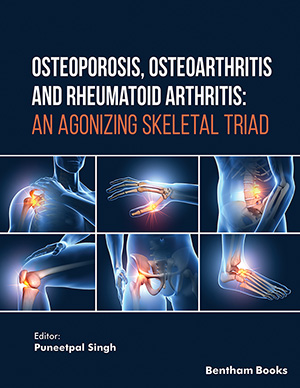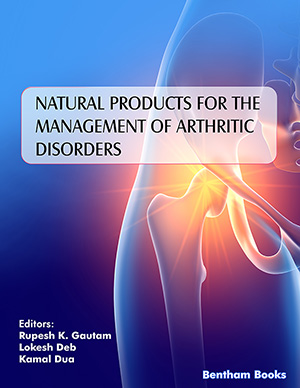Abstract
Gout, characterized by elevated uric acid levels, is a common inflammatory joint disease associated with pain, joint swelling, and bone erosion. Existing treatments for gout often result in undesirable side effects, highlighting the need for new, safe, and cost-effective anti-gout drugs. Natural products, including medicinal plants and phytochemicals, have gained attention as potential sources of anti-gout compounds. In this review, we examined articles from 2000 to 2020 using PubMed and Google Scholar, focusing on the effectiveness of medicinal plants and phyto-chemicals in managing gout. Our findings identified 14 plants and nine phytochemicals with anti-gout properties. Notably, Teucrium polium, Prunus avium, Smilax riparia, Rhus coriaria, Foenic-ulum vulgare, Allium cepa, Camellia japonica, and Helianthus annuus exhibited the highest xa-thine oxidase inhibitory activity, attributed to their unique natural bioactive compounds such as phenolics, tannins, coumarins, terpenoids, and alkaloids. Herbal plants and their phytochemicals have demonstrated promising effects in reducing serum urate and inhibiting xanthine. This review aims to report recent studies on plants/phytochemicals derived from herbs beneficial in gout and their different mechanisms.
Keywords: Inflammatory joint disease, bone erosion, anti-gout compounds, medicinal plants, phytochemicals, bioactive compounds.
[http://dx.doi.org/10.1007/s40744-020-00249-w] [PMID: 33111171]
[http://dx.doi.org/10.1007/s40744-020-00222-7] [PMID: 32720081]
[http://dx.doi.org/10.3389/fmed.2020.00560] [PMID: 33117824]
[http://dx.doi.org/10.1016/j.clnu.2019.03.016] [PMID: 30955983]
[http://dx.doi.org/10.1111/bph.14967] [PMID: 31883118]
[PMID: 32661926]
[http://dx.doi.org/10.33086/mhsj.v3i1.925]
[http://dx.doi.org/10.1016/S0149-2918(03)80158-3 ] [PMID: 12860487]
[http://dx.doi.org/10.3389/fcell.2020.00703] [PMID: 32850823]
[http://dx.doi.org/10.1016/j.semarthrit.2020.04.010 ] [PMID: 32620199]
[http://dx.doi.org/10.47363/JPSOS/2020(2)114]
[http://dx.doi.org/10.1007/978-981-15-1205-6]
[http://dx.doi.org/10.1016/j.clinthera.2014.07.017] [PMID: 25151572]
[http://dx.doi.org/10.1016/j.jep.2020.112606] [PMID: 31988013]
[http://dx.doi.org/10.1080/13813455.2019.1610779 ] [PMID: 31094218]
[http://dx.doi.org/10.1177/1934578X1100601006]
[PMID: 25326353]
[http://dx.doi.org/10.1038/ncomms1756] [PMID: 22473008]
[http://dx.doi.org/10.4172/pharmaceutical-sciences.1000151]
[http://dx.doi.org/10.1111/j.1445-5994.2007.01315.x ] [PMID: 17388867]
[http://dx.doi.org/10.1016/j.clindermatol.2006.07.015 ] [PMID: 17113968]
[PMID: 17922673]
[http://dx.doi.org/10.1111/jcmm.15582] [PMID: 32639111]
[http://dx.doi.org/10.1038/s41584-020-0441-1] [PMID: 32541923]
[PMID: 28630380]
[http://dx.doi.org/10.1186/s13075-020-02244-6] [PMID: 32552822]
[http://dx.doi.org/10.1038/cmi.2015.95] [PMID: 26549800]
[http://dx.doi.org/10.1007/s10753-020-01299-6]
[http://dx.doi.org/10.1007/BF00579637]
[http://dx.doi.org/10.1177/0300060520948717] [PMID: 32910705]
[http://dx.doi.org/10.3389/fphar.2018.00261] [PMID: 29628890]
[http://dx.doi.org/10.22159/ajpcr.2017.v10i11.20170]
[PMID: 24791587]
[http://dx.doi.org/10.1186/s11671-015-0851-1] [PMID: 25883541]
[http://dx.doi.org/10.1016/S0367-326X(01)00348-3 ] [PMID: 11731122]
[http://dx.doi.org/10.1016/S1043-6618(03)00059-8 ] [PMID: 12770512]
[http://dx.doi.org/10.1016/j.agrformet.2015.06.002]
[http://dx.doi.org/10.1080/13813455.2017.1333517 ] [PMID: 28557561]
[http://dx.doi.org/10.1016/j.foodchem.2011.12.054]
[http://dx.doi.org/10.1016/j.acthis.2003.08.001] [PMID: 15032331]
[http://dx.doi.org/10.1016/S1385-299X(00)00030-1 ] [PMID: 11086257]
[http://dx.doi.org/10.1136/bmjopen-2019-035108] [PMID: 32179562]
[PMID: 14776685]
[http://dx.doi.org/10.1093/rheumatology/kez606] [PMID: 31891407]
[http://dx.doi.org/10.1093/jn/133.6.1826] [PMID: 12771324]
[http://dx.doi.org/10.1002/art.34677] [PMID: 23023818]
[http://dx.doi.org/10.1177/1759720X19847018]
[http://dx.doi.org/10.1615/JEnvironPatholToxicolOncol.v28.i4.50] [PMID: 20102327]
[http://dx.doi.org/10.1016/j.jep.2013.07.011] [PMID: 23892206]
[http://dx.doi.org/10.1016/j.jep.2014.09.034] [PMID: 25267580]
[http://dx.doi.org/10.1142/S0192415X14200018] [PMID: 24467548]
[http://dx.doi.org/10.1016/j.fitote.2015.06.002] [PMID: 26051087]
[http://dx.doi.org/10.1016/j.fct.2009.12.021] [PMID: 20036300]
[http://dx.doi.org/10.2174/1874285802014010142]
[http://dx.doi.org/10.3390/antiox10010073] [PMID: 33430013]
[http://dx.doi.org/10.1007/s11655-013-1327-0] [PMID: 23275017]
[http://dx.doi.org/10.1016/0378-8741(91)90034-B] [PMID: 1795520]
[http://dx.doi.org/10.1080/19476337.2018.1504121]
[http://dx.doi.org/10.1016/j.biocel.2006.07.001] [PMID: 16978905]
[http://dx.doi.org/10.4314/tjpr.v15i2.20]
[http://dx.doi.org/10.1016/j.jff.2020.104055]
[http://dx.doi.org/10.1016/S0926-6690(99)00023-0]
[http://dx.doi.org/10.4103/1995-7645.242311]
[http://dx.doi.org/10.1016/B978-0-12-375688-6.10130-6]
[http://dx.doi.org/10.1007/s12272-012-0304-7] [PMID: 22477188]
[http://dx.doi.org/10.7762/cnr.2018.7.2.126] [PMID: 29713621]
[http://dx.doi.org/10.1089/jmf.2019.4513] [PMID: 32150484]
[http://dx.doi.org/10.1080/10408398.2014.889653] [PMID: 25849609]
[http://dx.doi.org/10.3892/ijmm.2017.2973] [PMID: 28487949]
[http://dx.doi.org/10.1016/j.jff.2018.06.025]
[http://dx.doi.org/10.1211/jpp.60.9.0015] [PMID: 18718127]
[http://dx.doi.org/10.1016/j.intimp.2008.11.008] [PMID: 19084080]
[http://dx.doi.org/10.3390/molecules22091489] [PMID: 28880226]
[http://dx.doi.org/10.1155/2018/8037925]
[http://dx.doi.org/10.4168/aard.2014.2.5.387]
[http://dx.doi.org/10.1016/j.foodchem.2013.05.021 ] [PMID: 23870914]
[http://dx.doi.org/10.1016/j.indcrop.2015.05.002]
[http://dx.doi.org/10.3390/molecules23030650] [PMID: 29534045]
[http://dx.doi.org/10.1016/j.jep.2004.03.037] [PMID: 15182918]
[http://dx.doi.org/10.1016/j.jep.2019.111874] [PMID: 30986520]
[http://dx.doi.org/10.1016/j.jep.2017.03.057] [PMID: 28390941]
[http://dx.doi.org/10.1016/S1001-9294(14)60075-4 ] [PMID: 25429747]
[http://dx.doi.org/10.4103/0973-1296.182176] [PMID: 27279708]
[http://dx.doi.org/10.1021/jf0721186] [PMID: 18052097]
[http://dx.doi.org/10.1021/jf0403484] [PMID: 15740011]
[http://dx.doi.org/10.1016/j.fct.2006.08.022] [PMID: 17049706]
[http://dx.doi.org/10.1142/S0192415X12500723] [PMID: 22928829]
[http://dx.doi.org/10.1016/j.fct.2012.07.068] [PMID: 22902805]
[http://dx.doi.org/10.22159/ajpcr.2018.v11i3.21790]
[http://dx.doi.org/10.3177/jnsv.47.78] [PMID: 11349895]
[http://dx.doi.org/10.1093/jn/130.11.2658] [PMID: 11053503]
[http://dx.doi.org/10.1016/j.foodchem.2011.03.098]
[http://dx.doi.org/10.1016/j.indcrop.2015.09.039]
[http://dx.doi.org/10.1080/21553769.2014.901926]
[http://dx.doi.org/10.1016/j.scitotenv.2019.03.010] [PMID: 30865908]
[http://dx.doi.org/10.1007/s10661-019-7752-1] [PMID: 31440848]
[http://dx.doi.org/10.3389/fnut.2021.669805] [PMID: 34368207]
[http://dx.doi.org/10.1007/s10661-016-5150-5] [PMID: 26863887]
[http://dx.doi.org/10.1016/j.foodcont.2016.01.021]
[http://dx.doi.org/10.1080/13880209.2017.1421235 ] [PMID: 29298537]
[http://dx.doi.org/10.1002/mnfr.200500250] [PMID: 16865746]
[http://dx.doi.org/10.1371/journal.pone.0090756] [PMID: 24608135]
[http://dx.doi.org/10.3390/antiox7070081] [PMID: 29949924]
[http://dx.doi.org/10.4103/0973-1296.182176] [PMID: 27279708] [PMCID: PMC4883080]
[http://dx.doi.org/10.1017/S0007114515005310] [PMID: 26785820]
[http://dx.doi.org/10.1111/j.2042-7158.2012.01504.x ] [PMID: 22775215]
[http://dx.doi.org/10.1126/science.1156995] [PMID: 18403674]
[http://dx.doi.org/10.1007/s10787-017-0356-x] [PMID: 28508104]
[http://dx.doi.org/10.1002/mnfr.201700447] [PMID: 29127724]
[http://dx.doi.org/10.1021/bm034012z] [PMID: 12741757]
[http://dx.doi.org/10.1021/acs.jafc.5b02605] [PMID: 26234731]
[http://dx.doi.org/10.1038/ni.1831] [PMID: 20023662]
[http://dx.doi.org/10.1093/hmg/dds131] [PMID: 22492997]
[http://dx.doi.org/10.1073/pnas.0402959101] [PMID: 15181200]
[PMID: 32625874]
[http://dx.doi.org/10.1016/j.freeradbiomed.2011.05.016 ] [PMID: 21641991]
[http://dx.doi.org/10.47070/ijapr.v8i6.1517]
[http://dx.doi.org/10.3390/molecules24112138] [PMID: 31174271]
[http://dx.doi.org/10.1111/j.0105-2896.2009.00860.x ] [PMID: 20193002]
[http://dx.doi.org/10.1016/j.biopha.2017.10.013] [PMID: 29091862]
[http://dx.doi.org/10.1016/j.toxlet.2017.06.008] [PMID: 28655517]
[http://dx.doi.org/10.1038/ejcn.2016.78] [PMID: 27188915]
[http://dx.doi.org/10.1002/jcb.27969] [PMID: 30592318]
[http://dx.doi.org/10.1016/j.biocel.2008.06.010] [PMID: 18662800]
[http://dx.doi.org/10.1038/sj.bjp.0702803] [PMID: 10510448]
[http://dx.doi.org/10.1186/s13075-019-1974-z] [PMID: 31455356]
[http://dx.doi.org/10.3844/ajidsp.2012.26.33]
[http://dx.doi.org/10.1038/nrd2060] [PMID: 16732220]
[http://dx.doi.org/10.1111/j.1541-4337.2006.00001.x]
[http://dx.doi.org/10.1159/000374064] [PMID: 25967960]
[http://dx.doi.org/10.1038/celldisc.2017.23] [PMID: 28698801]
[http://dx.doi.org/10.1038/nature04516] [PMID: 16407889]
[http://dx.doi.org/10.1016/j.intimp.2018.12.004] [PMID: 30537632]
[http://dx.doi.org/10.1007/s00109-018-01736-y] [PMID: 30637441]
[http://dx.doi.org/10.3892/etm.2015.2895] [PMID: 26889234]
[http://dx.doi.org/10.1016/j.fct.2013.06.037] [PMID: 23819915]
[http://dx.doi.org/10.1002/(SICI)1097-0010(20000515)80:7<1033::AID-JSFA595>3.0.CO;2-T]
[http://dx.doi.org/10.1021/acs.jafc.9b03633] [PMID: 31334649]
[http://dx.doi.org/10.1016/j.jff.2019.03.038]
[http://dx.doi.org/10.1016/j.freeradbiomed.2014.01.016 ] [PMID: 24503177]
[http://dx.doi.org/10.1038/srep38622] [PMID: 27934918]
[http://dx.doi.org/10.1002/em.22333] [PMID: 31490579]
[http://dx.doi.org/10.1016/j.phymed.2008.06.002] [PMID: 18693097]
[http://dx.doi.org/10.1016/j.phrs.2017.05.019] [PMID: 28559210]
[http://dx.doi.org/10.3389/fmicb.2018.00058] [PMID: 29422889]
[http://dx.doi.org/10.1615/IntJMedMushrooms.v1.i1.20]
[http://dx.doi.org/10.1016/j.nutres.2015.04.011] [PMID: 25940982]
[http://dx.doi.org/10.1007/s00284-014-0666-9] [PMID: 25086583]
[http://dx.doi.org/10.3390/medicines6010020] [PMID: 30699961]
[http://dx.doi.org/10.1002/ptr.6890] [PMID: 33090621]
[http://dx.doi.org/10.1016/j.ejphar.2013.05.049] [PMID: 23819912]
[http://dx.doi.org/10.1007/s11596-016-1573-z] [PMID: 27072969]
[http://dx.doi.org/10.1142/S0192415X06003655] [PMID: 16437741]
[http://dx.doi.org/10.1016/j.jep.2017.04.024] [PMID: 28456576]














